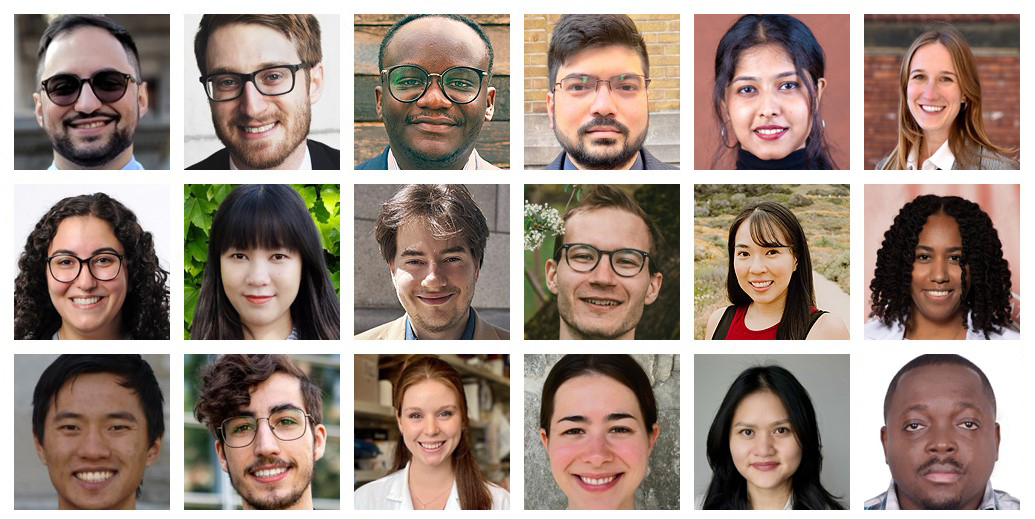
On August 30, the Honourable Randy Boissonnault, Minister of Employment, Workforce Development and Official Languages, on behalf of the Honourable François-Philippe Champagne, Minister of Innovation, Science, and Industry, and the Honourable Mark Holland, Minister of Health announced recipients of the 2023 Vanier Canada Graduate Scholarships.
In all, 166 Vanier Scholars will receive a total of $24.9 million in support through the Canadian Institutes of Health Research (CIHR), the Natural Sciences and Engineering Research Council of Canada (NSERC), and the Social Sciences and Humanities Research Council of Canada (SSHRC). The Vanier program helps Canadian institutions attract highly qualified doctoral students by investing $50,000 per year for three years during doctoral studies. Nineteen McGill graduate students earned 2023 Vanier Canada Graduate Scholarships.
Minister Boissonnault also announced $9.8 million in support of 70 Banting Fellows through the CIHR, NSERC and SSHRC. The Banting program provides funding to the very best postdoctoral applicants, both nationally and internationally, who will positively contribute to the country’s economic, social, and research‑based growth. Five McGill postdocs received 2023 Banting Postdoctoral Fellowships.
The Vanier Scholarships are part of a suite of funding in support of research and innovation announced by Minister Boissonnault that includes the John R. Evans Leaders’ Fund, the SSHRC-administered Canada Research Chair Program, the Partnership Development and Partnership Engage Grants & Insight Grants competitions, and NSERC’s Discovery Research Programs.
“My best wishes to all of the recipients of these grants, awards, and scholarships,” said the Honourable Mark Holland, Minister of Health. “The government is pleased to invest in your diverse array of health, natural sciences and engineering, and humanities and social sciences research projects because we know that your ideas, passion and hard work, as well as the evidence you uncover, are instrumental in improving the health and quality of life of people in Canada, and your findings contribute to the international research effort around the world.”
McGill’s 2023 Vanier Canada Graduate Scholars
Zaid Al-Azzawi, Integrated Program in Neuroscience
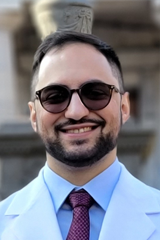 Characterization of Alpha-Synuclein Aggregation Using Parkinson Disease Patient-Derived Midbrain Organoids
Characterization of Alpha-Synuclein Aggregation Using Parkinson Disease Patient-Derived Midbrain Organoids
Parkinson’s Disease (PD) is the second leading cause of neurodegenerative disease affecting the brain with over 100,000 Canadians currently living with the disease. Lewy bodies composed mainly of aggregated alpha synuclein are a pathological hallmark of the disease. Recent progress in the field has established methods for the detection and amplification of alpha synuclein aggregates from various biological specimens namely through Seed Amplification Assays. Furthermore, evidence points to the existence of different alpha synuclein aggregate “strains” with unique pathological effects and structural motifs. Therefore, my project examines the kinetic and structural properties of alpha synuclein aggregates amplified using seed amplification assays from PD cell models and plasma samples from PD patients. The aim is to establish a pipeline for the systemic biochemical and structural analysis of alpha synuclein aggregates to better understand their implications on PD pathology.
Benjamin Crosby, Religious Studies
 “Christians, Good Friends, and Brethren”: Constructing Pan-Protestant Identity in the Elizabethan Church of England
“Christians, Good Friends, and Brethren”: Constructing Pan-Protestant Identity in the Elizabethan Church of England
My research explores how John Jewel and Richard Hooker, two key early thinkers of the reformed Church of England, understood the English church’s relationship to the Protestant churches of continental Europe. These thinkers were active during the reign of Elizabeth I, a period during which ecclesial authorities sought to clarify the identity of the Church of England. I will argue that Jewel and Hooker articulated unique accounts of shared ecclesial (that is, church) identity uniting the various Protestant churches of Europe. In doing so, they sought to transcend the divisions between Lutherans and Reformed Protestants while nonetheless staking out a Reformed position on those questions on which the two groups differed. My research contributes to our understanding of English religious and political history by examining identity-formation in the turbulent environment of late-sixteenth century political and theological conflict. It also has implications for contemporary theological conversations concerning Anglican identity.
Joseph Junior Damba, Epidemiology, Biostatistics and Occupational Health
 Assessing the risk of colorectal and pancreatic cancers associated with the use of Direct Oral Anticoagulants
Assessing the risk of colorectal and pancreatic cancers associated with the use of Direct Oral Anticoagulants
Direct oral anticoagulants (DOACs) are a specific type of anticoagulants, recently introduced in clinical practice in the prevention of venous thromboembolism and stroke in non-valvular atrial fibrillation (NVAF). These drugs exhibit a favorable drug-drug interaction profile, do not require regular monitoring, and are orally administered, all of which make them more attractive and widely utilized compared to conventional anticoagulants such as warfarin or heparins. However, a handful of animal studies have suggested an increased risk of colorectal (CRC) and pancreatic cancers (PC) associated with these drugs. These findings prompted several human studies that yielded inconsistent results, with some indicating a higher risk of both cancers while others did not. Given their widespread use, it is critical to clarify their long-term safety profile. My research project aims to assess the risk of CRC and PC associated with long-term DOACs use while also characterizing DOACs’ safety in patients with NVAF and cancer.
Abdullah-Al Faisal, Earth and Planetary Sciences
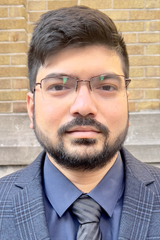 Grid-Based Assessment and Modeling of Global Material Fluxes: A New Tool for Providing Integrated Spatiotemporal Data on the Human-Earth System
Grid-Based Assessment and Modeling of Global Material Fluxes: A New Tool for Providing Integrated Spatiotemporal Data on the Human-Earth System
In an era of profound human-driven planetary changes, my research seeks to bridge the gap between human activities and Earth’s complex systems by integrating remote sensing, jurisdictional data, machine learning, and network modeling. Leveraging machine learning approaches, my project aims to construct global multi-dimensional network flow models by enabling the integration of heterogenous human and non-human data sources, capturing complex interdependencies within the human-Earth system. This innovative approach explores material stocks, flows, and their links to biogeochemical cycles. Through advanced network modeling, my project will reveal hidden patterns, quantify feedback loops, interpret causal relationships, and facilitate a comprehensive understanding of the coupled dynamics between human activities with the non-human Earth as a unified system. The project will make its harmonized and analyzed global gridded datasets publicly available, yielding invaluable insights that foster a deeper and more holistic understanding of the intricate relationships between humanity and Earth’s ecosystems across temporal scales.
Romina Filippelli, Biochemistry
 Restoring endogenous muscle stem cell function with eIF4A inhibitors as a treatment for Duchenne muscular dystrophy
Restoring endogenous muscle stem cell function with eIF4A inhibitors as a treatment for Duchenne muscular dystrophy
Duchenne muscular dystrophy (DMD) is a lethal neuromuscular disorder caused by the loss or malfunction of a protein named dystrophin, which stabilizes muscle fibers during contraction. Muscle stem cells (MuSCs) are a type of adult stem cell that can repair and regenerate damaged muscle tissue through a process known as differentiation. However, without dystrophin, DMD MuSCs do not differentiate properly, thus reducing their regenerative potential and contributing to muscle degeneration. DMD therapeutics currently aim towards improving patient care, hoping to prolong survival by targeting all muscles in the body. However, none specifically target MuSCs. My work aims to restore MuSC function through the usage of low doses of translation inhibitors. These findings will enhance our understanding of the pathways that control MuSC fate in healthy and DMD contexts. Ultimately, our goal is to provide proof of concept for a new therapeutic approach to enhance endogenous MuSC function in DMD.
Thi Kieu Khanh Ho, Electrical and Computer Engineering
 An Artificial Intelligence System for Epileptogenic Zone Identification Using Multimodal Neuroimaging
An Artificial Intelligence System for Epileptogenic Zone Identification Using Multimodal Neuroimaging
Epilepsy is one of the most prevalent neurological disorders affecting more than 65 million people around the world where 30-40% of them are drug resistant. The primary treatment for drug-resistant epilepsy is epilepsy surgery that requires identification of the epileptogenic zone (EZ), the brain area indispensable for seizure generation, which must be resected during epilepsy surgery. Defining the EZ requires visual inspection of intracerebral electroencephalography (iEEG) signals, measured through electrodes surgically implanted within the brain. This process is time-consuming, expensive, and labor-intensive. In my Ph.D. project, we aim to develop an expert artificial intelligence (AI) system to rigorously, objectively, and automatically analyze iEEG to determine whether its corresponding intracerebral channel is located in the EZ. Moreover, we propose to integrate extra biomarkers, such as scalp EEG. We will develop a multimodal learning technique to analyze these biomarkers together towards improving the performance of EZ identification.
Aleksei Kavun, Chemistry
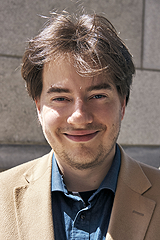 Shining Light for The Synthesis and Editing of Pharmaceuticals: Incorporation and Extrusion of a Nitrogen Atom
Shining Light for The Synthesis and Editing of Pharmaceuticals: Incorporation and Extrusion of a Nitrogen Atom
The nitrogen atom is one of the most abundant elements in living organisms. Therefore, nitrogen atom-containing molecules significantly affect human health as they are found in many commercial drugs and natural products.
In many cases, chemical reactions that either remove or add a nitrogen atom to a molecule are being used to serendipitously discover new pharmaceuticals with enhanced properties. Unfortunately, both incorporation and extrusion of a nitrogen atom are challenging: they usually require the use of expensive metals, harsh heating temperatures, and hazardous chemicals. To overcome these issues, I suggest the use of shining light on renewable biomass-derived starting materials and accessible pharmaceuticals.
Light application in complex chemical transformations, such as incorporating and extruding a nitrogen atom, will open a horizon for efficient drug discovery. Under sustainable conditions, the use of light eliminates the need for expensive metals, heat, and toxic chemicals for a greener approach to discovering novel pharmaceuticals.
Audrey Kern, Educational and Counselling Psychology
 A descriptive study of families involved in intergenerational cycles of maltreatment and reported to child welfare
A descriptive study of families involved in intergenerational cycles of maltreatment and reported to child welfare
Child maltreatment is a pervasive public health problem; 48.22 per 1000 Canadian children were investigated for incidents of child maltreatment in 2019. The widespread presence of child maltreatment is concerning as it not only has immediate negative effects on the child, but it can have harmful far-reaching consequences in the next generation. Parents with histories of abuse and neglect can be at greater risk of having children who also experience abuse and neglect, regardless of their involvement as perpetrators. However, little is known about the factors that make families vulnerable to intergenerational experiences of child maltreatment. My research aims to document the nature of the experiences of families in Montreal who have been intergenerationally involved with child protective services for child maltreatment and understand the mechanisms that sustain these cycles in order to prevent them from occurring.
Benno Krojer, Computer Science and Artificial Intelligence Laboratory
 Robust and Fine-Grained Vision and Language Representations for Interactive Multi-Modal AI Systems
Robust and Fine-Grained Vision and Language Representations for Interactive Multi-Modal AI Systems
Benno Krojer is a third year PhD student at the Mila Quebec AI Institute & McGill University and graduated with a BSc in Computational Linguistics from LMU Munich.
He researches fundamental problems in language grounding, interactive multi-modal NLP and more specific phenomena such as pragmatics, compositionality or text-to-image generation.
While large language models have shown impressive signs of compositionality and understanding, we still find many issues when connecting language to other modalities such as images: How can a model understand or generate an image, taking into account how concepts compose together, given any complex description?
Solutions require thorough data and benchmark groundwork, as well as modeling advances, enabling more robust and interpretable interfaces for humans. As these models transition from research to real-world deployment, Benno’s research will also incorporate topics such as bias and fairness.
Michelle Le, Experimental Medicine
 COVID-19 Immunologic Antiviral therapy with Omalizumab (CIAO trial) – An Adaptive Phase II Randomized-Controlled Clinical Trial
COVID-19 Immunologic Antiviral therapy with Omalizumab (CIAO trial) – An Adaptive Phase II Randomized-Controlled Clinical Trial
The COVID-19 pandemic, caused by the SARS-CoV-2 virus, has caused considerable morbidity and mortality worldwide. Omalizumab is an anti-IgE monoclonal antibody approved by Health Canada to treat chronic idiopathic urticaria and asthma. Omalizumab’s antiviral effect has been suggested to stem from enhancing innate antiviral cytokines. In addition, omalizumab suppresses the degranulation of inflammatory cells thought to contribute to the inflammatory response and lung remodeling in severe COVID disease. Taken together, omalizumab’s antiviral and anti-inflammatory properties support the need for a randomized controlled trial comparing omalizumab to placebo in the treatment of COVID-19.
My study comprises of a Phase IIb randomized controlled trial conducted at McGill University, Sunnybrook and Niagara Health Centres that examines the efficacy and safety of a single dose of omalizumab in hospitalized adult COVID patients. This study aims to improve patient survival and reduce the burden of this globally devastating disease on the healthcare system.
Mimosa Luigi, Psychiatry
 Improving safety in forensic Mental health hospitals: Examining current practices and evaluating a new risk assessment tool to prevent patient violence
Improving safety in forensic Mental health hospitals: Examining current practices and evaluating a new risk assessment tool to prevent patient violence
Forensic psychiatric hospitals, which treat justice-involved patients, present one of the greatest risks of violence in medicine. Inpatient violence can cause physical injury and psychological issues for professionals and patients alike. To prevent such incidents, risk assessment tools enable clinicians to evaluate a patient’s risk of becoming violent and then “match” assessments with targeted treatment plans. Unfortunately, there presently exists no validated method for matching.
Addressing this practice gap during my PhD, I will interview professionals and review patient charts at two forensic sites to understand current practices and build a conceptual model for matching processes. I will then validate a new risk assessment tool – DUNDRUM, which promises to facilitate matching and to increase patient engagement in this process. Finally, I am reviewing literature on how to implement collaborative interventions which involve forensic patients in risk management. Ultimately, results will inform concrete strategies towards increasing safety in forensic settings.
Julia Luo, Human Genetics
Deciphering the role of ZBTB7B in transcriptional regulation of macrophage inflammatory responses
Michael Luo, Integrated Program in Neuroscience
 Characterizing Glioblastoma-Driven Dysregulation of Cell Signaling Within the Subventricular Zone Niche to Identify Novel Therapeutic Targets
Characterizing Glioblastoma-Driven Dysregulation of Cell Signaling Within the Subventricular Zone Niche to Identify Novel Therapeutic Targets
Every year, 1600 Canadians are diagnosed with glioblastoma, a type of brain cancer. Despite the best available treatments, most patients pass away within 2 years. Current treatments are failing because they are not effective against glioblastoma stem cells, which can repopulate the tumour after treatment. Current research suggests that glioblastoma stem cells arise from neural stem cells that have accumulated mutations. However, mutations are not sufficient to cause cancer: glioblastoma stem cells are like seeds that need the right environmental conditions to grow. To understand what these conditions are, we analyze intercellular signalling between neural stem cells and surrounding healthy brain tissue, versus glioblastoma stem cells and abnormal surrounding tissue. This data can inform the development of new drugs to target abnormal signalling pathways and counter disease progression, which will hopefully bring us closer to finding effective treatments for glioblastoma.
Etienne Maes, Integrated Program in Neuroscience
 Updating the Cognitive Map through Dopaminergic Errors of Hippocampal Predictions
Updating the Cognitive Map through Dopaminergic Errors of Hippocampal Predictions
Defining the circuits in the brain that encode and retrieves information is key to the understanding of both healthy and disordered memory. The phasic release of dopamine (DA) from midbrain neurons has been implicated as a teaching signal to instantiate learning; similarly, the hippocampus is established as a crucial region in the encoding of memory. Clinically, patients with schizophrenia show a combination of hippocampal dysregulation, hyperactive DA release, and cognitive impairments, all of which are inadequately treated with modern antipsychotic medications. The goal of this project is to both determine the content and flow of information from hippocampus to DA release during learning, as well as produce a rodent model of the cognitive symptoms of schizophrenia, using DREADDs, optogenetics, and fiber photometry. Revealing how the hippocampus and DA orchestrate behavior is fundamental to understanding the basis of healthy brain function, as well as provide clearer therapeutic targets for mental disorders.
Sarah Maritan, Experimental Medicine
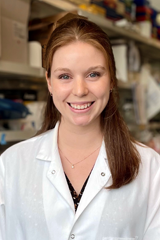 Characterizing tumor-intrinsic and microenvironmental mediators of invasive growth of brain metastases
Characterizing tumor-intrinsic and microenvironmental mediators of invasive growth of brain metastases
The majority of cancer related deaths are caused by cancer spread to another part of the body, a process called metastasis. Cancer spread to the brain, or brain metastasis, occurs in nearly one third of patients with cancer, and has an average survival of less than one year. Our research shows that brain metastases can grow in two distinct patterns within the brain: either with cancer cells extensively invading into the distant brain – which is associated with particularly poor patient outcomes – or as a single mass that does not invade outwards. Using patient samples collected during surgery, I will study how invasive and non-invasive brain metastases differ in the genes they express and how they interact with neighbouring healthy brain cells. By learning about the mechanisms by which the cancer cells invade the brain, we aim to identify new therapeutic strategies for better clinical management of patients with brain metastases.
Lily-Cannelle Mathieu, Anthropology
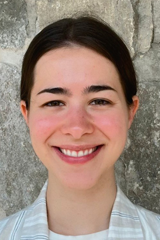 Coding Emotions: A Multi-Sited Ethnography of Women Programmers in Affective Computing
Coding Emotions: A Multi-Sited Ethnography of Women Programmers in Affective Computing
With her doctoral research, Lily-Cannelle Mathieu proposes a phenomenological, sensorial and feminist approach to computer vision artificial intelligence (AI) technologies. Her project, which tackles the question of form, puts forward a creative take on what contemporary ethnographical fieldwork is and can be and reflections on what constitutes cultural alterity today among and beyond humans. She hopes to contribute to the development of more human sensibility in the study of AI and to a greater consideration for issues of cultural and social justice in the governance and industrial use of the technology.
Racchana Ramamurthy, Civil Engineering
 Investigating human and environmental risk of polymeric per- and polyfluoroalkyl substances (PFASs) and their link to unknown organofluorines
Investigating human and environmental risk of polymeric per- and polyfluoroalkyl substances (PFASs) and their link to unknown organofluorines
Known as the “forever chemicals”, per- and polyfluoroalkyl substances (PFASs) are a group of human-made chemicals found in consumer goods, such as food packages and waterproof clothing. Containing multiple strong C-F bonds, PFASs are highly stable and resistant to natural degradation, and are detected ubiquitously in our environment and bodies. So far, researchers have largely focused on small and mobile molecules or non-polymeric PFAS, while overlooking larger polymeric PFASs found in the bulk of PFAS-containing products. Coincidentally, researchers have long been puzzled by the large fraction of unknown organofluorines detected in the environment and biota. Are these unidentified organofluorines part of the polymeric PFAS? I aim to answer this long-standing scientific question by studying both polymeric and non-polymeric PFAS contamination in consumer products and environmental samples using state-of-the-art analytical tools. New methods resulting from my work will open pathways to study polymeric PFAS further and accurately represent total PFAS contamination.
Helen Thai, Clinical Psychology
 Cognitive Training in Schizophrenia-Spectrum Disorders: Fostering Motivation to Enhance Efficacy
Cognitive Training in Schizophrenia-Spectrum Disorders: Fostering Motivation to Enhance Efficacy
People with schizophrenia often experience cognitive difficulties that negatively impact illness course and recovery. Effective interventions to improve cognitive health (e.g., cognitive remediation, metacognitive training) have been developed but are not widely available. Further, intervention effectiveness is influenced by patient motivation which may fluctuate over time. Thus, designing interventions to maximize patient engagement is an important challenge to improving outcomes. My research addresses this challenge by using the leading theory of human motivation, Self-Determination Theory, to identify factors that maintain patient motivation and treatment engagement. In collaboration with five mental healthcare sites across Canada, cognitive health interventions will be delivered remotely to remove barriers to treatment. To optimize treatment efficacy and response, experiential factors that impact treatment engagement will be identified. This research incorporates the patient perspective to enrich and inform the research enterprise so that results more directly address the concerns and priorities of clinical populations under study.
Ata Senior Yeboah, Social Work
 Integrating Ecological well-being and Climate Change Concerns into Community Development Practices in Ghana: Barriers, Facilitating Factors, and the role of Community Development Actors
Integrating Ecological well-being and Climate Change Concerns into Community Development Practices in Ghana: Barriers, Facilitating Factors, and the role of Community Development Actors
In Ghana, previous research outputs have emphasized how disadvantaged populations disproportionately endure the detrimental impacts of environmental over-exploitation by corporate and multinational firms. Despite the wide incidence of environmental injustices in the country, there is limited research attention geared towards incorporating environmental justice frameworks into community development practices and sustainability. In fact, the limited scholarly attention inhibits the ability of policymakers, community practitioners and environmentalists to understand how the tenets of environmental justice can be integrated into community development practices to mitigate the disproportionate exposure of vulnerable groups to environmental hazards. Following this, my research project seeks to shed light on feasible pathways of integrating environmental justice considerations into development practices in the Ghanaian context. The research will also attempt to challenge the limited inclusion of the views and perspectives of marginalized populations in environmental decision-making spaces.
Learn more about McGill’s 2023 Banting Postdoctoral Fellowships recipients
